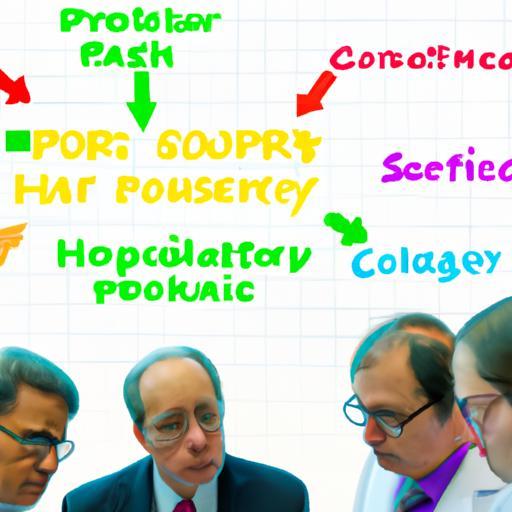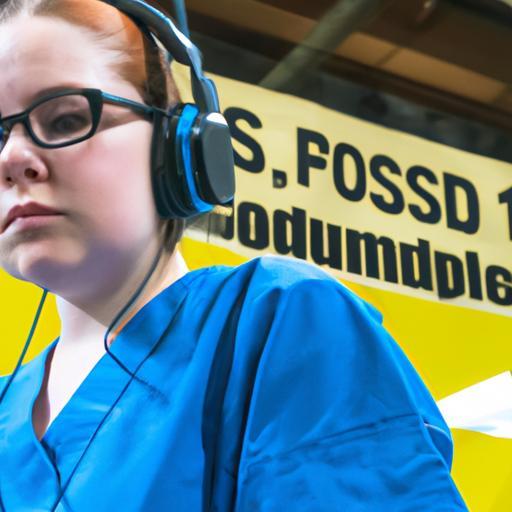Welcome to the world of food safety! In an industry where quality and safety are paramount, understanding the key elements ensuring consumer well-being is crucial. One such essential component is the formula for food safety, encompassing HARPC, CCPs, PRPs, and OPRPs. This article delves into this formula, exploring its significance and role in maintaining food safety standards. Moreover, we’ll discover how podcasts have become a valuable medium for disseminating knowledge about food safety practices, making it accessible to professionals across the industry.
 Scientists discussing the components of the formula for food safety.
Scientists discussing the components of the formula for food safety.
Collaborating on food safety protocols is essential for a robust food safety culture.
Understanding the Formula for Food Safety
To comprehend the formula for food safety, we must first grasp the significance of each component it comprises. Let’s dive in!
Introduction to Food Safety and HARPC
Food safety ensures products are safe for consumption and free from hazards, a critical aspect of the food industry. Hazard Analysis and Risk-Based Preventive Controls (HARPC) is a preventive approach emphasizing identifying and addressing potential risks throughout the food production process.
What is the main purpose of HARPC? HARPC shifts the focus from reactive measures to proactive prevention, ensuring potential hazards are addressed before they threaten consumer safety. By implementing HARPC, food processors proactively analyze and control hazards, mitigating potential risks and safeguarding consumers.
Exploring CCPs, PRPs, and OPRPs
Within the formula for food safety, several key components work in tandem to ensure a robust system:
- Critical Control Points (CCPs): Specific points in the production process where hazards can be controlled or eliminated.
- Preventive Control Points (PRPs): General practices and conditions necessary to maintain a hygienic environment. This might include handwashing procedures, facility sanitation, and pest control.
- Other Preventive Control Points (OPRPs): Additional control measures that address specific risks not covered by CCPs or PRPs.
These components, when implemented effectively, form a strong foundation for food safety.
The Impact of HARPC in Ensuring Food Safety
HARPC plays a pivotal role in maintaining food safety standards. Let’s explore its significance in detail.
Detailed Explanation of HARPC and Its Purpose
HARPC is a preventive control system that places the responsibility on food processors to identify potential hazards and implement controls to minimize risks.
Steps Involved in Implementing HARPC
Implementing HARPC involves a systematic approach:
- Hazard Analysis: Food processors must conduct a thorough hazard analysis, identifying potential biological, chemical, and physical hazards associated with their products and processes.
- Preventive Controls: Once hazards are identified, processors must establish and implement preventive controls to minimize or eliminate risks.
- Monitoring Procedures: Regular monitoring of the implemented controls is essential to ensure their effectiveness.
- Record Keeping: Maintaining detailed records is crucial for demonstrating compliance with HARPC regulations.
By following these steps diligently, processors not only meet regulatory requirements but also create a safer food production environment.
 Employees monitoring critical control points in a food processing facility implementing HARPC guidelines.
Employees monitoring critical control points in a food processing facility implementing HARPC guidelines.
Regular monitoring of critical control points is essential for ensuring food safety.
Identification and Assessment of Hazards using HARPC
One of the core aspects of HARPC is the identification and assessment of hazards. This involves conducting a comprehensive analysis of potential risks throughout the production process. By identifying these hazards, food processors can develop effective control measures, minimize risks, and ensure the safety of their products.
Role of CCPs, PRPs, and OPRPs in HARPC Implementation
CCPs, PRPs, and OPRPs are integral to the successful implementation of HARPC. CCPs act as checkpoints where control measures are applied to prevent, eliminate, or reduce hazards to an acceptable level. PRPs encompass general practices, such as sanitation and employee hygiene, that maintain a hygienic food processing environment. OPRPs address specific risks that are not covered by CCPs or PRPs, ensuring comprehensive control of potential hazards.
The Impact of Podcasts in Promoting Food Safety Practices
With the rise of digital media, podcasts have emerged as a powerful tool for disseminating knowledge and promoting best practices. Let’s explore the role of podcasts in the context of food safety.
Overview of Podcasts as a Medium for Sharing Information
Podcasts have gained immense popularity due to their accessibility and convenience. They offer a unique platform for experts and enthusiasts to share their insights and experiences. With the ability to listen on-the-go, professionals in the food industry can stay informed and up-to-date with the latest developments in food safety practices.
Importance of Podcasts in Disseminating Knowledge about Food Safety
Podcasts provide a valuable opportunity to dive deep into the world of food safety. Through engaging conversations and interviews, industry experts share their expertise and insights, covering a wide range of topics related to the formula for food safety.
Looking for reliable food safety information? Podcasts offer a convenient and accessible way to stay informed!
Examples of Popular Food Safety Podcasts and Their Content
Several exceptional podcasts cater to the food safety community, covering a diverse range of topics.
- Food Safety Matters: Hosted by Food Safety Magazine, this podcast brings together experts to discuss various aspects of food safety, including HARPC, CCPs, PRPs, and OPRPs.
- The Food Safety Evangelist: This podcast delves into the challenges faced by food safety professionals and provides valuable insights to navigate the industry successfully.
Benefits of Listening to Food Safety Podcasts
Listening to food safety podcasts offers numerous benefits to professionals in the industry:
- Learning from Experts: Podcasts provide direct access to the knowledge and experience of industry leaders and specialists.
- Practical Tips and Insights: Gain actionable advice and practical tips that can be implemented in your own work environment.
- Staying Updated: Keep abreast of emerging trends, technologies, and changes in regulations related to food safety.
- Networking Opportunities: Connect with other professionals in the field, fostering a sense of community and shared learning.
 Listening to a food safety podcast while working in a food production environment.
Listening to a food safety podcast while working in a food production environment.
Staying informed through podcasts can enhance food safety practices in any setting.
Conclusion
The formula for food safety, incorporating HARPC, CCPs, PRPs, and OPRPs, serves as the backbone of ensuring consumer safety in the food industry. By understanding and implementing this formula effectively, food processors can mitigate risks and maintain high standards of food safety. Furthermore, podcasts have emerged as a valuable resource, enabling professionals to access valuable insights and expertise, ultimately enhancing their understanding of the formula for food safety. So, tune in to these informative podcasts, embrace the formula, and contribute to a safer food industry for all.
Do you have any experiences with HARPC implementation or recommendations for valuable food safety resources? Share your thoughts and insights in the comments below!
For further exploration on this topic, visit ruouhannk.com.

